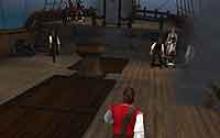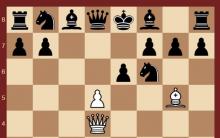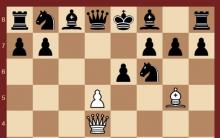Maps of the Penza province
| title | sb.list | example | ||||
| PGM Saransk district | 1v | 1792 | 81.6mb | |||
| PGM Trinity County | 1v | 1792 | 74.5mb | |||
| PGM Narovchatsky district | 2c | 1782 | 75.9mb | |||
| PGM Penza district | 2c | 1792 | 110.1mb | |||
| PGM Chembarsky district | 2c | 1792 | 139.1mb | |||
| PGM Sheshkeevsky district | 2c | 1792 | 81.6mb | |||
| Agricultural map(Bashmakovskiy, Belinskiy, Gorodishchenskiy, Zemetchenskiy, Kamenskiy, Kolyshleyskiy, Kuznetskiy, Mokshanskiy, Nizhne Lomskiy, Penza, Serdobskiy, Shemyshleyskiy districts) | 1km | 1963 | 2.1Gb | |||
| PGM Mokshansky district | 2c | 1792 | 130.9mb | |||
| PGM Insar district | 2c | 1793 | 96.3mb | |||
| PGM Narovchatsky district | 1v | 1789 | 51.3mb | |||
| PGM Krasnoslobodsky district | 1v | 1789 | 71.1mb | |||
| PGM Gorodishchensky district | 1v | 1789 | 94.9mb | |||
| PGM Verkhnelomovsky district | 1v | 1789 | 46.3mb | |||
| PGM Nizhnelomovsky district | 1v | 1789 | 46.7mb | |||
| PGM Kerensky district | 1v | 1789 | 25.1mb | |||
| Schubert Map | 3c | 1880 | ||||
|
Atlas of the Penza province (all counties except Lomovsky) |
5v | 69.2mb | ||||
| Mende Map | 1v | XIX century | 557.5mb | |||
| Map of the Penza province | 4km | 1963 | 3.4mb | |||
| Lists of populated places | 1864 | 271.3mb |
Maps available for free download
Maps are not available for free download, about getting maps - write to mail or ICQ

Historical information on the province
The province occupied 34129.1 sq. a verst or 3,555,115 acres between 52°38" -54°5" north latitude and 40°27½" - 44°31" east longitude from Greenwich. It bordered on the west - with Tambov, in the south - with Saratov, in the east - with Simbirsk, in the north - with Nizhny Novgorod.
Population
In 1896, the population of the Penza province was 1,480,665 (721,102 men and 759,563 women). According to the 1897 census (preliminary count), there were 1,483,948 (72,0912 men and 763,036 women). In 1896, there were 1,387,726 Orthodox, 22,362 schismatics, 1,025 Catholics, 410 Protestants, 619 Jews, 68,131 Mohammedans, 392 other confessions. 84,684 estates, 1,301,425 peasants, 451 other estates. In 1865, there were 1,199,272 inhabitants in the province. The split is widespread mainly in the districts of Chembarsky (the village of Poim) and Nizhnelomovsky. Up to 800 Molokans live in the village of Andreevka, Chembarsky district. There is a Nikolaev brotherhood to fight the schism. In 1892, there were 210,290 households in the volosts, of which 206,029 were peasant households. The average composition of a household was 6.3 souls. The average (for 5 years) population growth per year is 25,022 people or 1.7%. By January 1, 1892, 278,884 souls had no more than the norm (1.9 dess.). The highest allotment - from 2.75-4.6 dess. on the lips; 294,261 souls owned it (published by the committee of ministers - "Code of statistical materials" p. 153). Of the counties, the most populated are Narovchatsky (59.5 inhabitants per square verst), Nizhnelomovsky (56.3 people) and Penza (54 people); the least populated Gorodishchensky district (29.9 people). Throughout the province for 1 square. a verst accounts for 46.9 souls.
Since ancient times, Mordvins, Muromas, Meshchers and Burtases lived in the Penza province. The oldest settlements: Murunza on the site of the present city of Mokshan, Meshcherskoye on the Khoper River and Burtas in the current Kerensky district. Ivan the Terrible set up watchtower settlements with fortresses here. Later, the fortresses were interconnected by artificial ramparts: one of them went from Penza to Ramsay, Mokshan, Lomov and Kerensk, the other from the suburbs of Atemar to Saransk and Sheshkeev. In order to protect against the raids of the Tatars and others, Mokshan was built in 1535, in the 17th century. - Narovchat, Krasnoslobodsk, Sheshkeev, etc. Burtases and Murom merged with neighboring peoples, especially with Russians. The Meshcheryaks, out of 33,000, live in 14 villages, of which 10 are in the southwestern part of the Kerensky district; at present they are almost indistinguishable from Russians.
Mordva, among about 187½ thousand, lives in 200 villages and villages of the districts of Krasnoslobodsky, Insarsky, Narovchatsky, Saransky and especially Gorodishchensky; there are several Mordovian villages in Chembarsky and Nizhnelomovsky counties.
There are more than 68 thousand Tatars in 89 villages, of which 66 are in Krasnoslobodsky, Insarsky and Saransky counties, the rest are in the northern part of Chembarsky and Kerensky counties. There are 2 Tatar villages in Gorodishchensky and Nizhnelomovsky uyezds, 1 in Moksha uyezd, and no Tatar villages in other uyezds. The Tatars have more than 100 mosques and 80 schools. Now they willingly learn Russian as well. The rich Tatars are engaged in trade, the poor - in arable farming and burlachstvo. Part of the Tatars goes to seasonal work in other provinces.
Administrative-territorial division
In 1708, from the cities of the current Penza province, Mokshan and Penza were part of the Kazan province, while others belonged to the Azov province.
In 1725, Upper and Lower Lomov were part of the Tambov province of the Voronezh province, Krasnaya Sloboda, Shishkeev, Kerensk, Narovchat and Trinity prison - Shatsk province of the Voronezh province; Penza, Mokshan and Saransk were provinces of the Kazan province.
In 1780, an independent Penza governorship was established with 13 counties: Verkhnelomovsky, Gorodishchensky, Insarsky, Kerensky, Krasnoslobodsky, Mokshansky, Narovchatsky, Nizhnelomovsky, Penza, Saransky, Troitsky, Chembarsky, Shishkeevsky.
From 1797 to 1801 The Penza province did not exist independently, but was divided among 4 neighboring ones.
At the end of the 19th century there were 10 counties: Penza, Gorodishchensky, Mokshansky, Saransky, Chembarsky, Nizhnelomovsky, Kerensky, Krasnoslobodsky, Narovchatsky and Insarsky. Zemsky chiefs in the counties of Gorodishchensky, Insarsky, Krasnoslobodsky and Chembarsky 6 each, in Nizhnelomovsky and Saransky 5 each, in the counties Penza, Kerensky, Narovchatsky and Mokshansky 4 each. In judicial terms, the entire province was subordinate to the Penza District Court. City judges were in the cities of Penza, Saransk, Mokshan, Nizhny Lomov and Chembar. Notary office, except for cities, in the village of Bazarnaya Kenshe, Gorodishchensky district. There are 6 male monasteries, with 170 monastics, and 10 female monasteries, with 2478 monastics. Orthodox churches 823, parishes 691. Lutheran church 1, mosques 121, Jewish synagogues and prayer schools 2.
In 1918, Ruzaevsky uyezd was formed, and in 1923 Spassky and Temnikovsky uyezds (previously in Tambov gubernia) were annexed.
In 1925 Insarsky, Kerensky, Mokshansky, Narovchatsky, Saransky and Temnikovsky were abolished. Ruzaevsky district was renamed into Saransky, and Spassky into Bednodemyanovsky.
On May 14, 1928, the province and all its counties were abolished, and their territory became part of the Middle Volga region.
* All materials presented for download on the site are obtained from the Internet, therefore the author is not responsible for errors or inaccuracies that may be found in the published materials. If you are the copyright holder of any submitted material and do not want a link to it to be in our catalog, please contact us and we will immediately remove it.
The province consisted of 10 counties: Penza, Gorodishchensky, Mokshansky, Saransky, Chembarsky, Nizhnelomovsky, Kerensky, Krasnoslobodsky, Narovchatsky and Insarsky.
Topographic maps
0. Plans of the General Land Survey of the end of the 18th century. Scale in 1 inch - 1 verst (1cm - 420m)

Scale: 1 verst in an inch and 2 versts in an inch
Year of topographic survey: 1785 - 1792
Description:
The maps are detailed, not topographical, these are the very first detailed maps in the history of cartography, the relief is perfectly conveyed on the plans, small objects, villages, villages, farms are plotted, mills, graveyards, etc. are marked, these are the best maps for searching for coins and relics .
The following counties of this province are available:
* Verkhnelomovsky district 1 verst
* Gorodishchensky district 1 verst
* Insar county 2 versts
* Krasnoslobodsky district 1 verst
* Kerensky district 1 verst
* Narovchatsky district 1 verst
* Nizhnelomovsky district 1 verst
* Saransk district 1 verst
* Serdobsky district 1 verst
* Moksha district 2 versts
* Chembarsky district 2 versts
2. Map of the Penza province from the atlas of 1827.

Year of topographic survey: 1843
Description:
The maps are not very detailed, they are well suited for historians, local historians and treasure hunters to determine the boundaries of counties. large villages and churches are indicated. Color map from the atlas of 32 provinces, map application: coat of arms of the province. Map sample.
4. Topographic map of the Penza province by I.A. Strelbitsky 1865-1871

Year of topographic survey: 1865-1871
Scale: 10 versts in an inch 1:420,000 (in 1 cm - 4.2 km).
Description:
This map contains currently disappeared settlements, farms, villages and villages, all roads, inns, taverns, springs and wells, as well as mosques and churches, one of the best maps for detecting.
Sheets - 73, 74, 91, 92 belong to the Penza province. Fragment of the map. Collection sheet.
5. Military topographic map of 1865

Year of topographic survey: 1865
Scale: 3 versts in an inch - (1 cm - 1260 m).
Description:
Schubert's military topographic map. One of the best and favorite maps by search engines. It displays all the smallest details: villages, farms, inns, horches, wells, shallow roads, etc. Map fragment.
Scale: 3 versts in an inch - (1 cm - 1260 m). Collection sheet.
6. Topographic map of the Penza province in 1881

Year of topographic survey: 1881
Scale: 5 versts in an inch (in 1 cm - 2.1 km)
Description:
The scale is 5 versts in an inch (in 1 cm - 2.1 km). There are 9 counties in total. Penza, Gorodishchensky, Mokshansky, Saransky, Chembarsky, Kerensky, Krasnoslobodsky, Narovchatsky and Insarsky.

Year of topographic survey: 1941-1942
Scale: 1:250,000 (2.5 km in 1 cm)
Description:
US Army Maps 1955. The maps are perfectly detailed, all settlements are indicated, including the destroyed villages and villages during the Great Patriotic War, all roads, military units and military bases, railways and stations. Although the scale is not very detailed, it allows you to accurately determine the location of the disappeared village. The maps were created on the basis of captured military maps of 1941-42 of the Red Army.
The map covers the entire central part of Russia Assembly sheet ;
You can sort by region.
Map fragment
Other materials for this province
0.

Year: 18th-20th centuries
Description:
Parish chronicle of the village of Polivanova-Sergievsky, Kerensky district 1889
Commemorative book of the Penza province 1911
Penza province Materials for geography and statistics 1867
Dungeons of Penza and the Penza region.
Administrative-territorial division of the Penza region 1955, 1968
Construction book of the city of Penza as material for the history of the settlement of Eastern Russia in the 17th century. Tikhomirov I.A. - 1908
Reference book personnel of officials of the Penza province 1913
Reference book of the Penza province for 1858
Reference book of the Penza province for 1854
Construction book of the city of Penza 1908
Tens of the Penza Territory (1669-1696)
The collection is constantly updated

Year: 1860
Description:
Contents of the book: The name of the owner and the name of the estate, the number of peasants and households in the village and estate, the number of households and estates, information and the amount of cash dues, detailed descriptions of the land belonging to each landowner or peasant of the village. JPG book format.
This book is useful for finding villages where kulaks might well have hidden their money.
Fragment of book 1
Fragment of book 2

Year: 1837 - 1854
Description:
Military Statistical Review of Russia. This book included: military topographic descriptions of provinces and counties, roads, both dirt and large tracts, data on the location and movement of the population, descriptions of trading establishments, including fairs, detailed descriptions of county towns, descriptions of all kinds of military and civilian institutions, historical monuments, churches and much more.
3.
Big collection.

Year: 1807-1908
Description:
1. On the Orthodox monasteries of the Russian Empire.
A detailed description of all 2245 Orthodox monasteries that existed in Russia, including the Arkhangelsk province, also describes in detail the geographical position. . Only three volumes, over 1000 pages.
2. Review of Orthodox monasteries established in Russia.
1869 book. Overview of Orthodox monasteries in the period from 1764 to 1869. 230 pp.
3. Historical description of Russian dioceses, churches and monasteries.
Book 1825. Detailed description of all monasteries, dioceses, churches, dates of construction, indications of religious processions, temple holidays. 228 pages
4. History of the Russian hierarchy.
Books 1807 - 1817 All churches of all provinces are covered. Only 6 parts, more than 5000 pages. Pretty entertaining books.
5. Description of the monasteries of the Russian Empire.
1817 book. All the monasteries and parish churches are described, the dates of construction, temple holidays, incidents in them. 221 pages
6. Detailed description of the monasteries.
An 1829 book, the monasteries are in alphabetical order. Holidays, fasts, miraculous events and dates and much more. 318 pp.
7. Orthodox monasteries of the Russian Empire.
1908 book. 1105 monasteries in 75 provinces. Over 1000 pages
8. Historical description of churches in the Russian Empire.
1828 book. 162 pages
9. Lists of hierarchs and abbots of monasteries.
1877 book. Over 1000 pages
10. A complete collection of historical information about all the monasteries and churches that were in antiquity and now exist.
Book 1853.
The volume of all books is more than 1 GB.
The Penza vicegerency was established in 1780 during the administrative reform of Catherine II on the lands withdrawn for this purpose from the Kazan province (from the former Penza province, abolished in 1775), as well as from the lands of the former Shatsk and Tambov provinces (ceased to exist in the same 1775) of the Voronezh province. The Penza vicegerency consisted of thirteen counties (Verkhnelomovsky, Gorodishchensky, Insarsky, etc.). During the reign of Paul I in 1796, in the course of the reverse reorganization of the Russian governorships in the province, most of the districts of the abolished Saratov governorship were transferred to the newly organized Penza province - Atkarsky, Balashovsky, Volsky, Kamyshinsky, Kuznetsky, Petrovsky, Saratov, Serdobsky, Khvalynsky and Tsaryovsky .
In the Penza province, in whole or in part
There are the following maps and sources:
(with the exception of those indicated on the main page of general
all-Russian atlases, where this province can also be)
 1-on and 2-layout surveying of the 18th century (1780-90s)
1-on and 2-layout surveying of the 18th century (1780-90s)
Map-one-layout and two-layout survey - not topographic (latitudes and longitudes are not indicated on it), a hand-drawn map of the late 18th century. (after changing the boundaries of the provinces in 1775-79) on a scale of 1 inch 1 verst or in 1 cm 420 m and 1 inch 2 versts or in 1 cm 840 m. Color maps are very detailed.
The purpose of the land surveying map is to indicate the boundaries of land plots (so-called dachas) within the county.
 1-layout of the Penza province of Mende, 1850s.
1-layout of the Penza province of Mende, 1850s.
The one-layout map of Mende is a topographic map (latitudes and longitudes are indicated on it), a hand-drawn map of the mid-second half of the 19th century. (after the next changes in the borders of the provinces of Russia in 1802-03), very detailed - on a scale of 1 inch 1 verst or in 1 cm 420 m. A separate county was drawn in fragments, on several sheets, shown on a single composite sheet.
 Lists of populated places in the Penza province in 1869 (according to information from 1864).
Lists of populated places in the Penza province in 1869 (according to information from 1864).
This is a one-stop reference guide that contains the following information:
- the status of the settlement (village, village, village - owner or state, i.e. state);
- the location of the settlement (in relation to the nearest tract, camp, at a well, pond, stream, river or river);
- the number of households in the settlement and its population (men and women separately);
- distance from the county town and camp apartment (centre of camp) in versts;
- the presence of a church, a chapel, a mill, etc.
In 1797, the Penza province was abolished (de facto, it was reorganized into the Saratov province through a simple renaming). The Penza uyezds, which were not part of the new Saratov province, were distributed between the Tambov Penza and Simbirsk provinces (the Nizhnelomovskiy uyezd became part of the Tambov gubernia, the Krasnoslobodskiy uyezd became part of the Nizhny Novgorod uyezd, the Saransky and Insar uyezds became part of the Simbirsk gubernia). The city of Penza became the county center of the county of the same name in the north-west of the Saratov province. In the very first year of the reign of Alexander the First (in September 1801), the Penza province was restored practically within the former Catherine's borders of ten counties, the number of which remained throughout the subsequent pre-revolutionary period in the history of the Penza province.











Corsairs To Each His Own Passage Of The Quest In Search Of The Guardian Of Truth - tioneproperties
Walkthrough "Corsairs: To Each His Own"
Walkthrough "Corsairs: To Each His Own"
Cell biology puzzles
Why hasn't the computer beat the human yet?